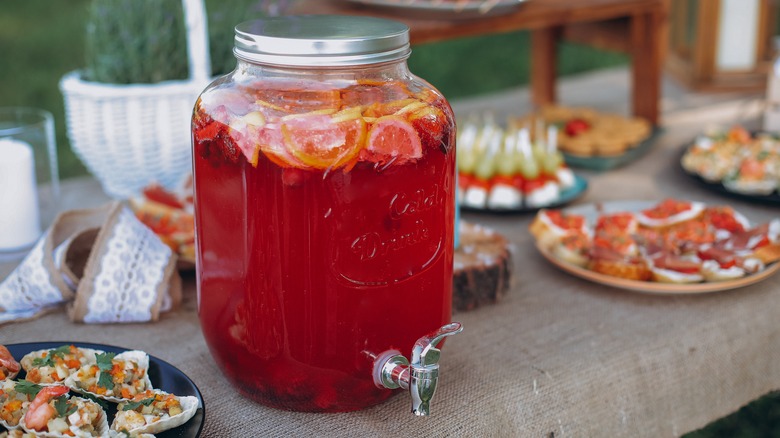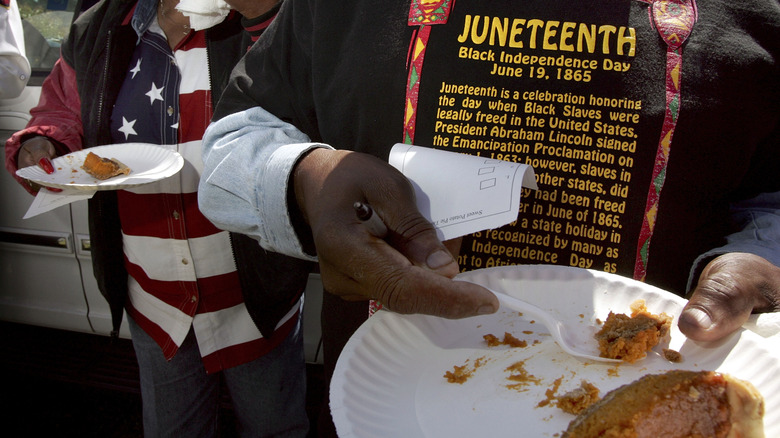Why Red Foods Are So Significant To Juneteenth
Go to any Juneteenth cookout and you're bound to find a spread of various red-toned foods and drinks. From fruit punch and cocktails to dishes garnished with red bell pepper and paprika, the type of food served on June 19 is an important part of the celebration, as foods are for any holiday. Most people eat turkey on Thanksgiving and chocolate on Valentine's Day without thinking twice about why, but for Juneteenth, eating red foods isn't just a tradition.
As culinary historian and writer Michael Twitty shared with Oprah Daily, the color is symbolic of the last of the enslaved Africans, located in Galveston, Texas, who gained their freedom on June 19. "There were a lot of enslaved Africans who were coming to Texas from the continent and through the Caribbean," Twitty explained. "The color red is highly associated with the cultures that would've come through the later years of the trade, which would have been Yoruba and Kongo."
When that group of Africans were brought to Texas, they also brought their culture with them. In Yoruba and Kenya, red can be representative of sacrifice, transition, and power, so it was only fitting that the color would be prominent in celebrating their freedom from enslavement years later.
Red drinks are especially important to Juneteenth
Many naturally red foods like watermelon and red beans have a place on Juneteenth menus, but historically, red drinks have been more prominent. According to Adrian Miller, a culinary historian and author of "Soul Food: The Surprising Story of an American Cuisine, One Plate at a Time" (via Atlas Obscura), this has to do with the prevalence of red corn, kola nut, and hibiscus, the latter of which were West African crops brought to America from the Caribbean during the Atlantic slave trade. Red corn was used to make homemade whiskey, hibiscus was used to make a tea called bissap, and kola nuts were crushed into a powder to create a natural energy drink and cold remedy that could also make bitter water palatable.
After emancipation and over the years, these three red drinks evolved into teas and lemonades made from cherries and strawberries, with the color and flavor being extracted with vinegar and syrup water. In the 1920s, red food coloring was invented, and Texas soda brand Big Red became a Juneteenth staple. To this day, people still place an importance on drinking red drinks to continue the legacy started by the first Juneteenth. As Miller shared in his book, "I love eating red-colored foods, especially red drinks, because it connects me to previous generations of African Americans.

